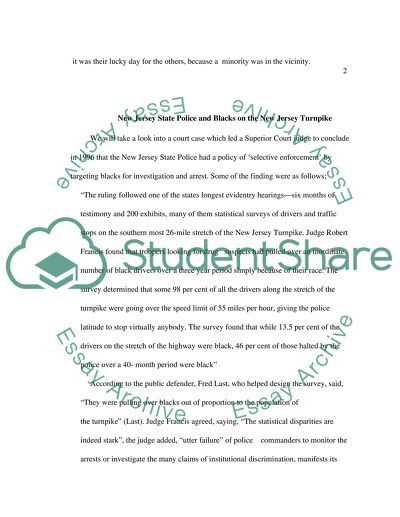Cite this document
(“NJ state police and blacks on the NJ turnpike Essay”, n.d.)
Retrieved from https://studentshare.org/law/1529432-nj-state-police-and-blacks-on-the-nj-turnpike
Retrieved from https://studentshare.org/law/1529432-nj-state-police-and-blacks-on-the-nj-turnpike
(NJ State Police and Blacks on the NJ Turnpike Essay)
https://studentshare.org/law/1529432-nj-state-police-and-blacks-on-the-nj-turnpike.
https://studentshare.org/law/1529432-nj-state-police-and-blacks-on-the-nj-turnpike.
“NJ State Police and Blacks on the NJ Turnpike Essay”, n.d. https://studentshare.org/law/1529432-nj-state-police-and-blacks-on-the-nj-turnpike.


